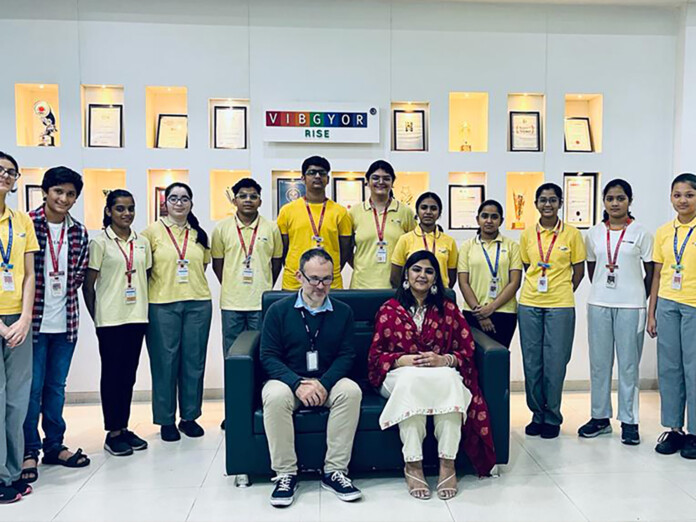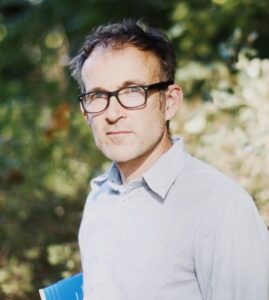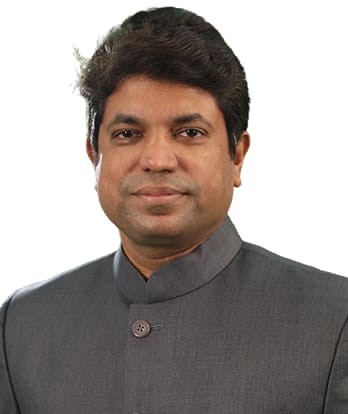The VIBGYOR Group of 36 schools across India, have taken introducing climate education very seriously. They set up The Climate Academy at VIBGYOR High in Goregaon, Mumbai early 2024. They were lucky to have got Matthew Pye, the founder of The Climate Academy, Belgium, to guide them in this initiative.
Benedict Paramanand, Editor, SustainabilityNext, caught up with Matthew Pye and Shim Mathew, Academic Operations, and International Partnerships, VIBGYOR Group of Schools, to discuss various elements of their grand initiative. Edited excerpts:
It is impressive to see how you integrate philosophy, sustainability, and climate action in your work. Can you elaborate on how you weave these elements together?
Matthew Pye: In my role as a philosophy teacher, I leverage the curriculum to explore deeper ethical perspectives and policies concerning climate action. This involves discussing the philosophical foundations of environmental ethics, which helps students appreciate the complexities of sustainability. By making these concepts relatable and understandable, students can engage with the material academically and personally, seeing their role in the broader system of climate action.
That’s an innovative approach. How did VIBGYOR schools get interested in climate education?
Shim Mathew: Our journey into climate education began quite serendipitously. An encounter in Sweden between one of our school’s staff members and several climate action leaders sparked our interest. This experience highlighted the importance of thoroughly understanding the issues of sustainability and climate change by us first before we could effectively educate our students about them. It was a pivotal moment that set us on this path.
What are the long-term objectives and goals of VIBGYOR schools in this area over the next 3-5 years?
Shim Mathew: Over the next few years, our focus will be on scaling our educational outreach to encompass by building a broader student base. We effort to impart knowledge about climate action and empower our students to mobilize their communities towards sustainable practices. The primary goal is to foster a sense of civic engagement and responsibility, enabling students to initiate and participate in meaningful change.
You used the term ‘system’ quite often in our conversation. Can you help us understand the nuances of this concept in the context of climate education?
Matthew Pye: Certainly. When discussing systems in the context of climate education, I often use temperature as an illustrative example. The concept of temperature varies significantly depending on the context—fever in humans versus global warming in the ecosystem. This analogy helps students understand that the implications of temperature changes can be diverse, affecting different systems in different ways. Such distinctions are crucial for a comprehensive understanding of climate impacts.
How do you plan to inculcate this wealth of knowledge in school curriculum, and what age groups are you targeting?
Shim Mathew: We’ve initiated the launch of climate academies, starting with eight schools in Mumbai just this April. These academies serve as hubs for advancing our climate curriculum. We are extending this initiative by conducting extensive training for teachers on climate change modules and curriculum. This year alone, we’ve expanded these programs to our schools across Bengaluru, Pune, and other locations, targeting students from various age groups to groom them into climate ambassadors by the time they graduate.
In India, engaging teachers in sustainability has been a challenge. What strategies are you employing to overcome this hurdle?
Matthew Pye: Engaging teachers effectively requires them to experience the impact of their teachings firsthand. We encourage our educators to step beyond traditional teaching methods and immerse themselves in climate action. The transformation often begins once they witness the tangible benefits of sustainable practices. We encourage a multidisciplinary approach where teachers link climate change to the subjects they teach, which enhances student engagement and makes the learning experience more relevant and compelling.
There is a noticeable gap between awareness and action. How can we accelerate the transition to more actionable outcomes?
Matthew Pye: Bridging this gap involves focusing on community-based approaches. We start by integrating the knowledge into textbooks, but the real transformation is driven through active participation. By creating small, focused groups within schools, we can better manage and expand the transition from mere awareness to proactive action. Schools play a crucial role in facilitating this change by utilizing educational content and resources to inspire and equip students to make a difference.
Edited by J Shiruti
Listen to the conversation












